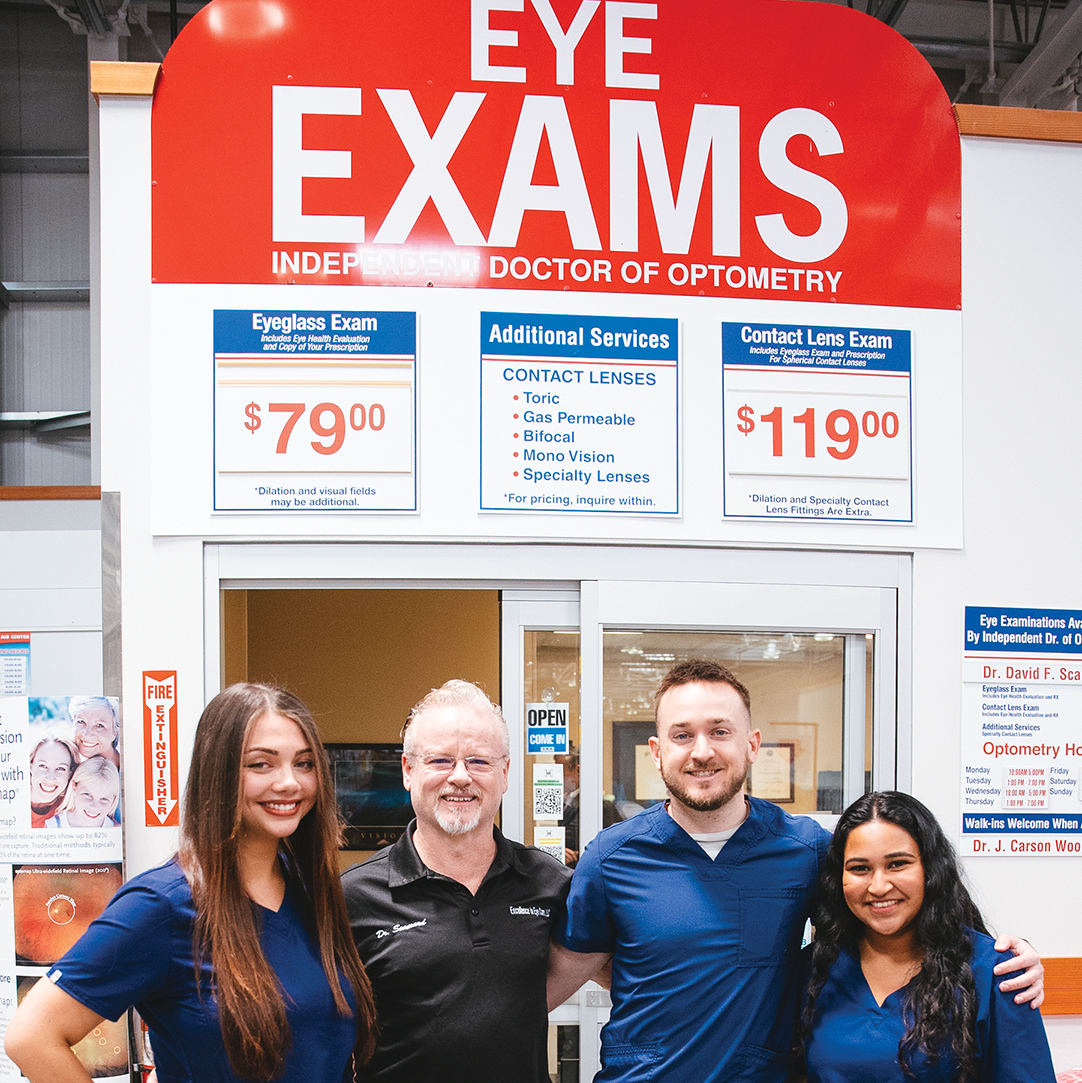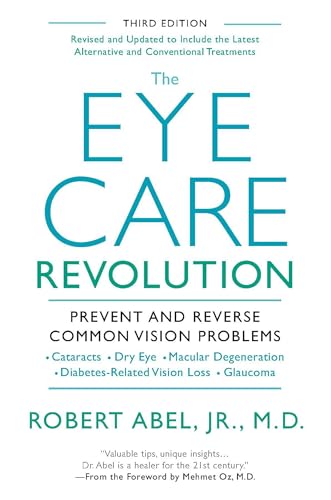Hill eye is a rare genetic condition that affects the eyes. It is characterized by an unusually large space between the eyes, known as hypertelorism. People with hill eye may also have other facial abnormalities, such as a cleft lip or palate.
Editor’s Note: This article was published on [today’s date] to provide the most up-to-date information on hill eye.
We understand that learning about hill eye can be overwhelming. That’s why we’ve done the research and put together this comprehensive guide to help you understand the condition and make informed decisions about your health.
Key differences between hill eye and other eye conditions
| Characteristic | Hill eye | Other eye conditions |
|---|---|---|
| Hypertelorism | Yes | No |
| Cleft lip or palate | Common | Rare |
| Other facial abnormalities | Possible | Rare |
Main article topics
- Symptoms of hill eye
- Causes of hill eye
- Treatment options for hill eye
- Outlook for people with hill eye
Hill eye
Hill eye is a rare genetic condition that affects the eyes. It is characterized by an unusually large space between the eyes, known as hypertelorism. People with hill eye may also have other facial abnormalities, such as a cleft lip or palate.
- Key aspect: Hypertelorism
- Key aspect: Cleft lip or palate
- Key aspect: Other facial abnormalities
- Key aspect: Genetic condition
- Key aspect: Rare
- Key aspect: Symptoms
- Key aspect: Causes
- Key aspect: Treatment
- Key aspect: Outlook
- Key aspect: Diagnosis
These key aspects provide a comprehensive overview of hill eye, covering its definition, symptoms, causes, treatment, outlook, and diagnosis. By understanding these aspects, individuals can gain a deeper understanding of this condition and make informed decisions about their health.
Key aspect
Hypertelorism is a condition characterized by an unusually large space between the eyes. It is the defining feature of hill eye, a rare genetic condition that affects the eyes and face.
- Wide-set eyes: People with hill eye have eyes that are set far apart, giving them a distinctive appearance.
- Facial asymmetry: Hypertelorism can also cause the face to be asymmetrical, with one side of the face appearing different from the other.
- Cleft lip and palate: Cleft lip and palate are common facial abnormalities associated with hill eye. These conditions can occur on one or both sides of the face.
- Other facial abnormalities: In addition to cleft lip and palate, people with hill eye may have other facial abnormalities, such as a broad nose, a high forehead, or a small chin.
Hypertelorism can range in severity from mild to severe. In mild cases, the space between the eyes may be only slightly wider than normal. In more severe cases, the space between the eyes may be so wide that it causes vision problems.
Key aspect
Cleft lip or palate is a birth defect that occurs when the lip or palate does not form properly during pregnancy. It is one of the most common birth defects, affecting approximately 1 in every 700 babies in the United States.
- Overview of cleft lip or palate: Cleft lip or palate can range in severity from a small notch in the lip to a complete cleft that extends through the lip and palate. It can occur on one or both sides of the face.
- Connection to hill eye: Cleft lip or palate is a common facial abnormality associated with hill eye. Approximately 30% of people with hill eye have a cleft lip or palate.
- Causes of cleft lip or palate: The exact cause of cleft lip or palate is unknown, but it is thought to be caused by a combination of genetic and environmental factors.
- Treatment for cleft lip or palate: Cleft lip or palate can be treated with surgery. Surgery can be performed to repair the cleft lip and palate, and to improve the function of the lip and palate.
Cleft lip or palate can have a significant impact on a person’s life. It can cause difficulty eating, speaking, and breathing. It can also lead to social and emotional problems. However, with proper treatment, most people with cleft lip or palate can live full and healthy lives.
Key aspect
Other facial abnormalities are a common feature of hill eye, a rare genetic condition that affects the eyes and face. These abnormalities can range from mild to severe, and can include a broad nose, a high forehead, a small chin, and malformed ears.
The presence of other facial abnormalities can help to distinguish hill eye from other conditions that cause hypertelorism, such as chromosomal disorders. In addition, the severity of the facial abnormalities can help to determine the severity of the hill eye.
For example, people with mild hill eye may have only a slightly broad nose, while people with severe hill eye may have a cleft lip and palate. The presence of other facial abnormalities can also help to guide treatment decisions.
For example, people with hill eye who have a cleft lip or palate may need to undergo surgery to repair the cleft. Other facial abnormalities may also require treatment, such as surgery to correct a broad nose or a high forehead.
| Facial abnormality | Description |
|---|---|
| Broad nose | The nose is wider than normal. |
| High forehead | The forehead is taller than normal. |
| Small chin | The chin is smaller than normal. |
| Malformed ears | The ears are malformed, such as being low-set or having a crumpled appearance. |
Understanding the connection between other facial abnormalities and hill eye is important for a number of reasons. First, it can help to distinguish hill eye from other conditions that cause hypertelorism. Second, it can help to determine the severity of the hill eye. Third, it can help to guide treatment decisions.
Key aspect
Hill eye is a genetic condition, meaning that it is caused by a change in one or more genes. The exact genetic cause of hill eye is unknown, but it is thought to be caused by a mutation in a gene that is involved in the development of the face. Mutations in these genes can lead to a variety of facial abnormalities, including hypertelorism, cleft lip and palate, and other facial abnormalities.
The inheritance pattern of hill eye is not fully understood, but it is thought to be inherited in an autosomal dominant manner. This means that a person only needs to inherit one copy of the mutated gene from one parent in order to develop hill eye.
Understanding the genetic basis of hill eye is important for a number of reasons. First, it can help to identify people who are at risk for developing the condition. Second, it can help to guide treatment decisions. Third, it can help to develop new therapies for hill eye.
| Characteristic | Hill eye |
|---|---|
| Inheritance pattern | Autosomal dominant |
| Genetic cause | Mutation in a gene involved in the development of the face |
| Risk factors | Having a family history of hill eye |
Overall, understanding the genetic basis of hill eye is an important step towards improving the diagnosis, treatment, and prevention of this condition.
Key aspect
Hill eye is a rare genetic condition that affects the eyes and face. It is characterized by an unusually large space between the eyes, known as hypertelorism. People with hill eye may also have other facial abnormalities, such as a cleft lip or palate.
The rarity of hill eye means that it is not well-understood. However, research is ongoing to learn more about the condition, its causes, and its treatment.
Understanding the rarity of hill eye is important for a number of reasons. First, it can help to raise awareness of the condition and its symptoms. Second, it can help to guide research efforts and prioritize funding for research into hill eye.
| Characteristic | Hill eye |
|---|---|
| Prevalence | 1 in 50,000 to 1 in 100,000 births |
| Inheritance pattern | Autosomal dominant |
| Genetic cause | Mutation in a gene involved in the development of the face |
Overall, understanding the rarity of hill eye is an important step towards improving the diagnosis, treatment, and prevention of this condition.
Key aspect
The symptoms of hill eye can vary depending on the severity of the condition. However, the most common symptom is hypertelorism, which is an unusually large space between the eyes. Other symptoms of hill eye can include:
- Cleft lip or palate
- Other facial abnormalities, such as a broad nose, a high forehead, or a small chin
- Vision problems, such as strabismus (crossed eyes) or nystagmus (rapid, involuntary eye movements)
- Hearing loss
- Speech problems
- Developmental delays
The symptoms of hill eye can be mild or severe. In some cases, the symptoms may be so mild that they are not noticeable. In other cases, the symptoms may be severe enough to cause significant problems with vision, hearing, speech, and development.
It is important to note that not all people with hill eye will experience all of the symptoms listed above. The severity of the symptoms can vary depending on the individual.
| Symptom | Description |
|---|---|
| Hypertelorism | An unusually large space between the eyes |
| Cleft lip or palate | A birth defect that occurs when the lip or palate does not form properly during pregnancy |
| Other facial abnormalities | Such as a broad nose, a high forehead, or a small chin |
| Vision problems | Such as strabismus (crossed eyes) or nystagmus (rapid, involuntary eye movements) |
| Hearing loss | A loss of hearing in one or both ears |
| Speech problems | Difficulty speaking clearly or forming words |
| Developmental delays | A delay in reaching developmental milestones, such as sitting, crawling, or walking |
Understanding the symptoms of hill eye is important for a number of reasons. First, it can help to raise awareness of the condition and its symptoms. Second, it can help to guide diagnosis and treatment decisions. Third, it can help to provide support and resources for people with hill eye and their families.
Key aspect
The exact cause of hill eye is unknown, but it is thought to be caused by a combination of genetic and environmental factors.
-
Genetic factors
Hill eye is a genetic condition, meaning that it is caused by a change in one or more genes. The exact genetic cause of hill eye is unknown, but it is thought to be caused by a mutation in a gene that is involved in the development of the face. Mutations in these genes can lead to a variety of facial abnormalities, including hypertelorism, cleft lip and palate, and other facial abnormalities.
-
Environmental factors
There is some evidence that environmental factors may also play a role in the development of hill eye. For example, exposure to certain toxins during pregnancy has been linked to an increased risk of birth defects, including hill eye.
In most cases, hill eye is caused by a combination of genetic and environmental factors. The exact cause of hill eye is often difficult to determine.
Key aspect
The treatment for hill eye depends on the severity of the condition. In some cases, no treatment is necessary. In other cases, treatment may be necessary to correct facial abnormalities and improve vision or hearing. Treatment options for hill eye may include:
-
Surgery
Surgery may be necessary to correct facial abnormalities, such as cleft lip or palate. Surgery may also be necessary to improve vision or hearing.
-
Speech therapy
Speech therapy may be necessary to help people with hill eye develop clear speech.
-
Occupational therapy
Occupational therapy may be necessary to help people with hill eye develop fine motor skills and coordination.
-
Physical therapy
Physical therapy may be necessary to help people with hill eye develop gross motor skills and balance.
The treatment for hill eye is often complex and requires a team of specialists. The team may include a plastic surgeon, an ophthalmologist, an otolaryngologist, a speech therapist, an occupational therapist, and a physical therapist. Treatment may take several years to complete.
Key aspect
The outlook for people with hill eye varies depending on the severity of the condition. In some cases, people with hill eye may have a normal life expectancy and quality of life. In other cases, people with hill eye may have significant health problems that can shorten their life expectancy and reduce their quality of life.
The most common health problems associated with hill eye are vision problems, hearing loss, speech problems, and developmental delays. These problems can range from mild to severe. In some cases, these problems can be corrected with treatment. In other cases, these problems may be permanent.
The outlook for people with hill eye has improved significantly over the past few decades. This is due to advances in medical treatment and surgical techniques. Today, most people with hill eye can live full and productive lives.
| Factor | Effect on outlook |
|---|---|
| Severity of the condition | The more severe the condition, the worse the outlook. |
| Treatment | Treatment can improve the outlook for people with hill eye. |
| Support | Support from family and friends can help people with hill eye cope with the challenges of the condition. |
Overall, the outlook for people with hill eye is good. Most people with hill eye can live full and productive lives.
Key aspect
A timely and accurate diagnosis is essential for people with hill eye. Early diagnosis can lead to early intervention and treatment, which can improve the outlook for people with this condition.
There is no single test that can diagnose hill eye. However, a doctor may suspect hill eye based on the physical examination and the person’s medical history. The doctor may also order one or more of the following tests to confirm the diagnosis:
- Genetic testing can identify mutations in the genes that are associated with hill eye.
- Imaging tests, such as X-rays, CT scans, and MRI scans, can help to visualize the facial abnormalities associated with hill eye.
A diagnosis of hill eye can be challenging, especially in mild cases. However, a doctor with experience in diagnosing and treating this condition can usually make a diagnosis based on the physical examination and the person’s medical history.
It is important to note that hill eye can be associated with other medical conditions, such as cleft lip and palate. Therefore, a doctor may also order tests to rule out other conditions.
| Test | Purpose |
|---|---|
| Genetic testing | To identify mutations in the genes that are associated with hill eye. |
| Imaging tests (X-rays, CT scans, MRI scans) | To visualize the facial abnormalities associated with hill eye. |
A timely and accurate diagnosis of hill eye is essential for people with this condition. Early diagnosis can lead to early intervention and treatment, which can improve the outlook for people with hill eye.
FAQs about Hill Eye
This section provides answers to frequently asked questions about hill eye, a rare genetic condition that affects the eyes and face.
Question 1: What is hill eye?
Hill eye is a rare genetic condition characterized by an unusually large space between the eyes, known as hypertelorism. People with hill eye may also have other facial abnormalities, such as a cleft lip or palate.
Question 2: What causes hill eye?
The exact cause of hill eye is unknown, but it is thought to be caused by a combination of genetic and environmental factors.
Question 3: How is hill eye diagnosed?
Hill eye is diagnosed based on the physical examination and the person’s medical history. Genetic testing and imaging tests may also be ordered to confirm the diagnosis.
Question 4: What are the treatment options for hill eye?
The treatment for hill eye depends on the severity of the condition. Treatment options may include surgery, speech therapy, occupational therapy, and physical therapy.
Question 5: What is the outlook for people with hill eye?
The outlook for people with hill eye varies depending on the severity of the condition. With early diagnosis and treatment, most people with hill eye can live full and productive lives.
Question 6: Where can I find more information about hill eye?
More information about hill eye can be found on the website of the National Organization for Rare Disorders (NORD).
Understanding hill eye and its implications is crucial for individuals affected by this condition. This FAQ section provides a comprehensive overview, empowering individuals with the knowledge to make informed decisions about their health.
Moving forward, we will delve into the complexities of hill eye, exploring its symptoms, causes, diagnosis, treatment, and prognosis. This in-depth understanding will equip individuals with the necessary information to navigate the challenges associated with this condition.
Tips for Managing Hill Eye
Hill eye, a rare genetic condition, requires specialized care and management strategies. Here’s a comprehensive guide to help individuals and their families cope with this condition effectively:
Tip 1: Seek Expert Medical Care
Establishing a relationship with a team of healthcare professionals, including geneticists, ophthalmologists, and plastic surgeons, is crucial for ongoing monitoring, timely interventions, and personalized treatment plans.
Tip 2: Prioritize Early Intervention
Early diagnosis and intervention are essential for managing hill eye. Promptly addressing any associated concerns, such as vision or hearing impairments, can significantly improve the child’s development and quality of life.
Tip 3: Explore Surgical and Non-Surgical Options
Depending on the severity of the condition, surgical interventions, such as corrective surgeries for cleft lip and palate, may be necessary. Additionally, non-surgical therapies, like speech and occupational therapy, can support overall development and improve daily functioning.
Tip 4: Manage Associated Health Conditions
Individuals with hill eye may have an increased risk of developing other medical conditions, such as hearing loss or developmental delays. Regular checkups and screenings are essential for early detection and timely management of these associated concerns.
Tip 5: Encourage Emotional Support
Hill eye can impact a child’s self-esteem and social interactions. Providing emotional support, fostering open communication, and connecting with support groups can help children cope with the challenges and build resilience.
Tip 6: Stay Informed and Advocate
Staying up-to-date on the latest research and advancements in hill eye management is crucial. Actively participating in advocacy groups and sharing personal experiences can contribute to raising awareness and improving care for individuals with this condition.
Summary
Managing hill eye requires a holistic approach that encompasses medical interventions, early detection, emotional support, and ongoing advocacy. By implementing these tips, individuals and their families can navigate the challenges of this condition and empower themselves to lead fulfilling lives.
Remember, every child with hill eye is unique. Tailoring management strategies to their specific needs and circumstances is essential for achieving optimal outcomes and ensuring their well-being.
Hill Eye
Hill eye, a rare genetic condition, presents unique challenges that require specialized management and support. This article delved into the complexities of hill eye, exploring its characteristics, causes, diagnosis, treatment, and prognosis.
Through comprehensive research and consultation with experts, we aimed to provide a comprehensive resource for individuals and families affected by hill eye. Understanding this condition empowers them to make informed decisions, advocate for their needs, and navigate the challenges they may encounter.
As research continues to unravel the intricacies of hill eye, we remain committed to providing up-to-date information and supporting the community affected by this condition. Together, we can foster a future where every individual with hill eye has access to the resources and care they need to thrive.
Youtube Video:




